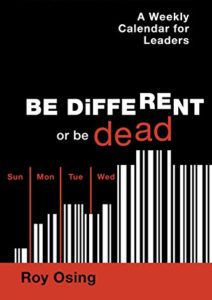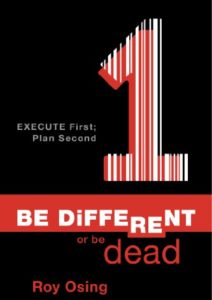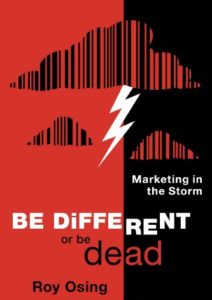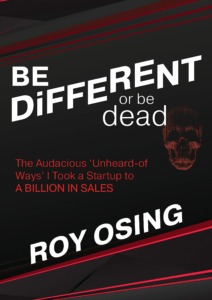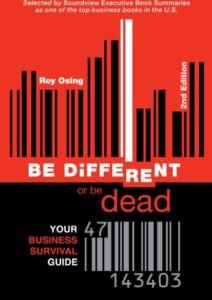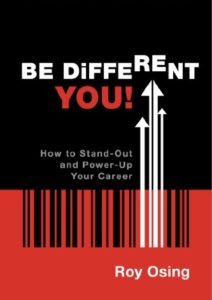When do you know a shift is occurring that will significantly alter the competitive landscape and terms of play? How can you spot the signs?
Some people lead a shift and determine its direction. Steve Jobs is a good example. He engineered a series of discontinuities that not only changed the world of communication and social engagement, but also vaulted his company to a new level of influence.
But for most of us mere mortals, we experience a shift only after it begins, takes hold, and changes the marketplace.
For example, most retailers took a wait-and-see attitude when online buying appeared. They didn’t just turn their brick-and-mortar businesses into virtual ones — they watched the trend and its evolution before changing the business infrastructure.
In another example, businesses are gradually incorporating digital and mobile capabilities into the customer experience — continuing more traditional media choices while adding new ones.
Rarely can an entrepreneur see the solutions on the ground and from 30,000 feet up — discontinuity is disconcerting, and it’s almost impossible to see ahead and predict how it will all play out.
What is certain, however, is that those who only stand on the sidelines and observe the action forego any opportunity to influence the shift and have any control over its outcome. Only the willing and the active stand a chance of surviving. A shift is like a wave — you either lean into it and learn to ride, or it will send you under and swallow you.
8 Actions You Can Take To Be a Shift Survivor
1. Be a learning organization.
You can leverage process mining software like Apromore, to better understand your processes and remain competitive. Create a culture that is always listening for changes taking place in customer behavior. Follow studies that report on adoption rates of new technologies and customer solutions. Pay special attention to segments like Millennials and women; they both wield the power to make you or break you.
2. Create a risk-taking culture.
Shift survival = (doing) (lots of) (imperfect) (stuff) (fast). If you are not experimenting in the shift, you won’t survive it. In this effort, experimentation will lead to many failures, so assess your survival competency by the number of failures you create. Then you can count the successes.
3. Question and disrupt your current direction.
Aggressively intervene in your own vision and push for order-of-magnitude changes. Modest change won’t satisfy the shift; monumental change might. Don’t be stodgy; don’t exclude change to your vision.
4. Apply “extension thinking” to overlay a trend in other industries on your business.
Read about how GE changed their business model. They made a digital shift that creates new value for people by connecting and controlling smart devices through cloud-based software platforms. What opportunities would this capability make possible for you? Study the forest from ground view as well as high above — and consider the broader implications.
5. Get your plan “just about right.”
Reduce precision in the plan itself; increase precision in your execution tactics. Don’t try to create a perfect plan. It doesn’t exist, and while you are trying to discover it, you are not accomplishing anything. Take an imperfect plan, execute it flawlessly, learn from the results you achieve, and adjust it along the way. This way lies progress.
6. Cut out the crap that gets in the way of engaging in the shift.
The projects and activities that may have been important in the old world may be irrelevant in the new, shifted landscape. How much of the strategies and tactics of the traditional print media business is crap in today’s digital world? How many resources are deployed in print vs digital? Preserving a print mentality robs you of the ability to participate in the shift. Honor the old and then say goodbye; if you don’t, you won’t have the resources or time to take on the new.
7. Create relevant and unique VALUE for the customers you serve.
Stop selling products and features; start delivering experiences. Address the key wants and desires of the customers you serve — and the ones you want to attract. Be the ONLY one doing what you do in order to stand out from the herd.
Keep your Sales team flexible. Constantly update your sales process. Align Sales with Marketing so your prospects get messaging when and where they need it. Make sure your salespeople know that, today, helping is selling. Building relationships keeps the prospect pool rich and qualified. Don’t let your Sales Department be part of the dusty past — encourage them to use the techniques that play to today’s new, powerful, informed customers.
8. FOCUS. FOCUS. FOCUS.
Do the few critical things to foster a shift; avoid the pitfall of doing too many. Failure is directly related to the amount of unproductive activity you waste time on. Pick three (or four) projects and do them brilliantly.
Surviving shift requires different thinking and different action. if you presume that what got you here will get you to where you need to go, you’re fooling yourself.
Originally published on the Talent Culture blog.




